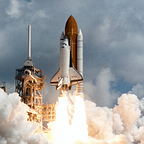Dream Chaser: America’s Future Spaceplane
A new kind of space shuttle
Following the conclusion of NASA’s Apollo missions to the Moon, the space shuttle ushered in a new era of spaceflight. To this day it’s widely considered to be the most complex flying machine ever to have been built. It’s a symbol of engineering prowess, and allowed America to have influence in low earth orbit for the duration of its 135 mission over 30 years.
Although plagued with tragedies, it’s still regarded as a truly revolutionary spacecraft. The final landing of Space Shuttle Atlantis in July of 2011 was believed to be the end of NASA’s spaceplanes, but what if it wasn't?
Who Are Sierra Space?
The Sierra Nevada Corporation (SNC), founded in 1963, is a private aerospace and defense company with a history of contracting with the American government. They’ve designed and modified aircraft, developed navigation and electronic warfare systems, and acquired multiple aerospace companies throughout years of business. Sierra Space, a subsidiary of the SNC, has attracted attention from NASA in the past few years.
Originally, they were building their spacecraft Dream Chaser with the intention of carrying NASA astronauts to the International Space Station. However, SpaceX and Boeing were chosen for that instead, but NASA did later give Sierra Space a contract to deliver cargo to the ISS. With funding from their previous design Sierra Space was able to modify Dream Chaser to be more cargo-compatible. In addition, they are preparing a secondary storage area called the Shooting Star. Its main use will be to collect any garbage from the ISS and burn up with that garbage upon reentry into the Earth’s atmosphere.
An Overview of Dream Chaser
Similar to its predecessor the space shuttle, Dream Chaser will liftoff from a launchpad, dock with the ISS in orbit, and then perform a controlled descent and stop on a runway back on Earth. This process makes sense, because both the shuttle and Dream Chaser are lifting body spacecraft. This essentially means that their wings don’t do a whole lot, and that their lift is from a large and flat underside. A big difference between the two is that Dream Chaser doesn’t actually need pilots to be flown, it’s fully automated throughout every step of its journey.
Takeoff
Sierra Space has made a partnership with the United Launch Alliance (ULA) to use their Vulcan Centaur rocket for Dream Chaser’s launches. In preparation for liftoff Dream Chaser’s wings will be folded to fit into a payload compartment.
The rocket will then launch, carrying Dream Chaser and its cargo into space. Afterwards, Dream Chaser can fire its engines to rendezvous with the ISS and deliver its cargo. It has a maximum capacity of up to 5,500 kilograms, largely because of the Shooting Star module which can hold extra supplies.
Landing
Once Dream Chaser has dropped off all necessary supplies for the astronauts aboard the space station, it will make its journey down to Earth. It will jettison the Shooting Star to burn up in the atmosphere and orient itself to have the heat shield in the proper position. Being controlled automatically, with no human pilot assistance, Dream Chaser will descend and use its large underside to glide to a runway, most likely the one at Kennedy Space Center that the space shuttles also landed on. Although, Dream Chaser is designed to be able to land at any runway a Boeing 737 can land on in case of emergency.
Additionally, Dream Chaser uses non-toxic propellant so ground crew can access the spacecraft right as it touches down. This was not the case with the space shuttle, and workers on the ground had to wait about 30 minutes before they could get close to the shuttle.
Conclusion
Sierra Space have been quite ambitious with the design of Dream Chaser, and it’s looking likely to pay off. On their website they say that the cargo version “is designed to be used 15 or more times”, and that a possible crewed version in the future can do at least 25 missions. The space shuttle was notorious for having long periods between missions, but with Dream Chaser’s lower maintenance design it looks like that won’t be as big of a problem.
As of now, Sierra Space only have one Dream Chaser spaceplane, named Tenacity, which they hope to launch early in 2022 and soon after begin conducting various missions for NASA. They have said that in the future their goal is to have a fleet of Dream Chaser’s, enabling easier resupplies for the space station and possibly providing lower cost transportation for astronauts. In addition, Sierra Space has been working with NASA to develop technologies for venturing further into space, particularly for the Artemis missions to the Moon.
It’s likely most people would be excited to know that spaceplanes are making a comeback in America, and that a fleet of Dream Chaser’s could be present in the very near future.
